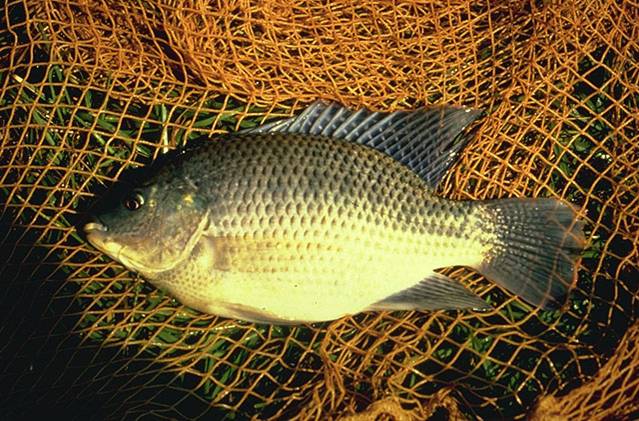In Israel, elementary fish farming started in the north in the early 50s for production ofcommon carp (Cyprinus carpio), the traditional species used for preparing Sabbath fish balls, or gefilte fish. In subsequent decades, large artificial ponds were built throughout the north, around the Sea of Galilee, and abutting the coastal areas, enabling farmers to expand their efforts and supply a large variety of fish for the Israeli palette.
Today the country consumes some 70,000 metric tons of fish, 17,000 tons of which are produced by freshwater fish aquaculture, 3000 more via mariculture, but the rest — some 60% of the local demand — has to be imported.
Most of Israel’s aquaculture still involves tilapia (also known as St. Peter’s fish,Tilapia spp.) and carp-family species for dining, but there is now an accent on high-profit ornamental carp varieties such as koi, goldfish (Carassius auratus) and other aquarium species. Some 95% of these hobby fish are exported, making Israel one of the major operators in this specialty market. Other fish raised for the local markets include mullet (various species of the Mugilidae family), sea bream (known in Israel as Denise, various species of the Sparidae family), sea bass (various species of the Serranidae family) and trout (various fish of the genera Salmo andOncorhynchus).

Blue tilapia
Because Israel imports more than 50% of its table fish, there is a clear need to expand local fish farming. However, the high value of land in the center and north of the country and the necessity of utilizing taxpayer-subsidized national-water-system resources to fill the ponds makes future expansion of Israel’s freshwater aquaculture in these regions highly problematical.
Researchers at the Blaustein Institutes’ Bengis Center for Desert Aquaculture, headed by Samuel Appelbaum, have come up with a revolutionary — some have said “off-the-wall” — idea for expanding Israel’s fish farming. Why not move it to theNegev desert where land is basically free? Such a high-tech industry would help develop the economy of Israel’s south, increase its population and provide employment. This idea complements the country’s long-desired goal to strengthen the Negev, the lifelong dream of its first prime minister David Ben-Gurion. In addition, an official program was adopted by the Israeli government in November 2005 that designates the investment of some $4 billion in a Negev Strategic Development Plan , which — among its many goals — includes a 70% increase in population by 2015. Availability of this government support for Negev could go far to expand aquaculture in the region.
In addition, the Israeli market for edible fish is potentially much greater than its present annual per capita consumption of about 11 kg. The EU-15 countries, for example, average 25.5 kg per capita, while Spaniards eat up to 45 kg, with fish representing some 21% of their animal protein consumption (the Japanese about 60kg!!. Thus desert fish farming has great promise for Israel’s economy and public health.
But from where will the water come? Here the lifelong work of now retired BIDR hydrology expert Prof. Arie Issar comes into play. Having read of French scientists finding fossil water in Nubian sandstone layers deep beneath the Sahara Desert, Issar began looking for possible water in similar formations that underlie the Negev. In 1970, his experimental drilling south of the Dead Sea led to the discovery of artesian wells of brackish geothermal water, similar to that previously found in theSahara. Despite its high salt content in comparison to drinking water, but still only 10% of ocean water salinity, the newly found resource was quickly adopted. The geothermal water was attractive for Dead sea industrial concerns as well as for farmers who could use it for raising salt-resistant crops. Issar estimated the size of this “fossil” aquifer — i.e., anciently stored, nonrenewable, underground water — to be about 200 billion cu m. With Israel’s annual water use standing at 2 billion cu m, controlled exploitation of this water for use in the south could easily supply the local communities for many centuries. Moreover, since artesian pressure sends the fossil water — stored at 600 m and greater depths, up to sea level, pumping costs are relatively low.
Previous section Next section